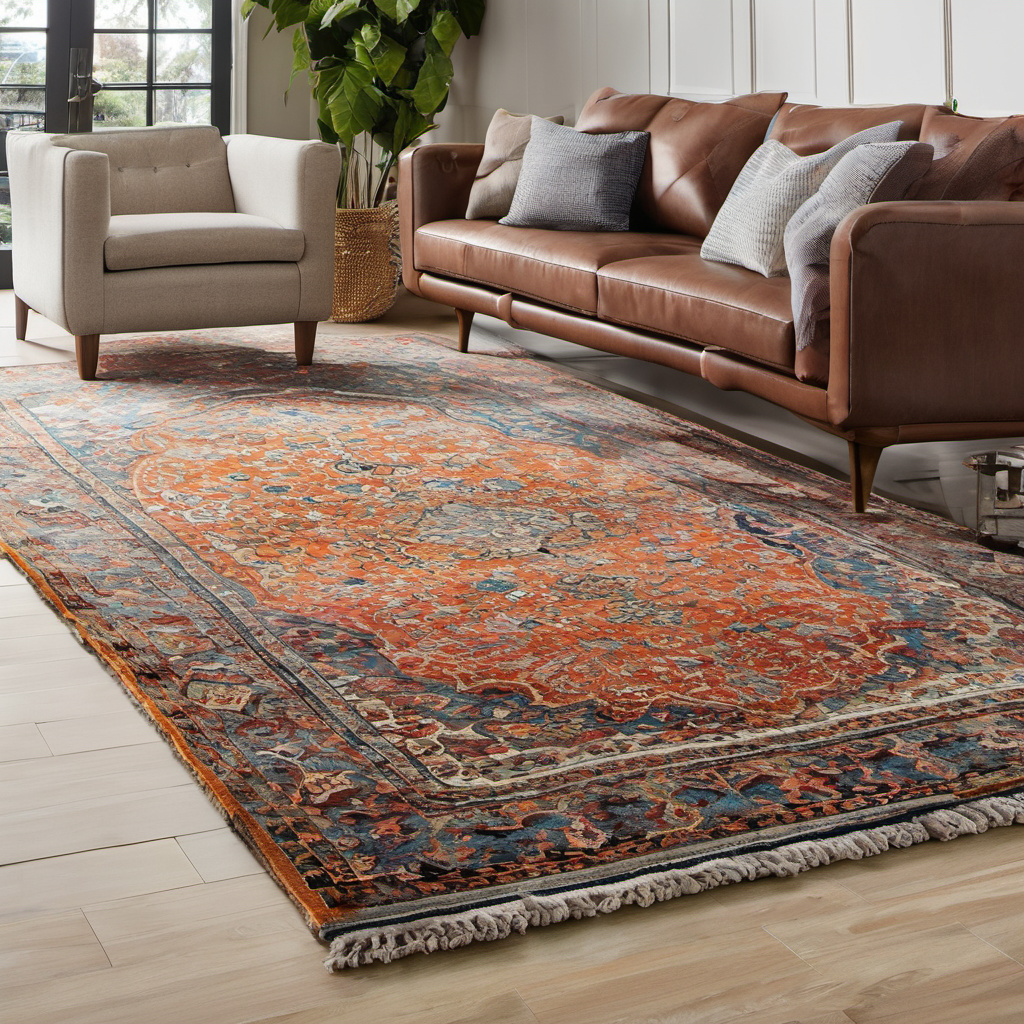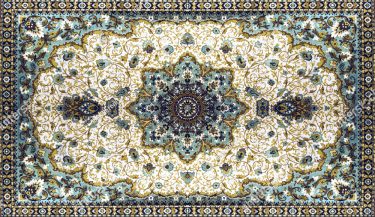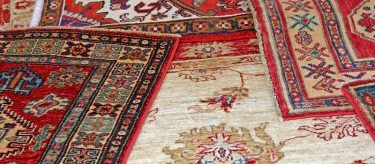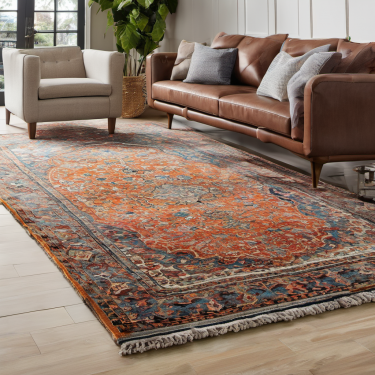Protecting Your Rugs During Relocation
Home » Green Carpet Blog » Oriental Rug Care » Protecting Your Oriental Rugs During Relocation
Oriental rugs are exquisite art that depicts everlasting impressions. Although rug weaving has evolved over the centuries, oriental rugs continue to set unique and elegant trends in marketplaces. Whether you are relocating and winding up your setups or your oriental rug manufacturers and retailers are shipping their cargo, the packing and unpacking of your oriental rugs affect the lifespan of your favorite rugs.
This blog will discuss how oriental rugs are made, their origin, and the factors affecting their colors by exposure to direct sunlight and moisture. You will delve into understanding how your storage location and material used during packaging determine the oriental rugs’ durability.
What Is The Contextual Background Of Your Favorite Oriental Rugs?
Oriental Rugs, also known as Knotted pile rugs, are timeless masterpieces that have evolved over the centuries. Their origin dates back to the 2nd millennium BC of the Kingdom of Mari, where skilled craftsmen weaved the rugs using wool warp. However, in the subcontinent, they emerged during Indo-Islamic architecture influenced by nomads of Azerbaijan and central Asia.
Initially, pile-woven rugs were made for Islamic prayers, Jewish Torah arcs, or wall hangings.
It gained popularity in the late 17th century when it was hot selling trade items for North American and European Countries. The ancestry of oriental rugs lay in the rug belt regions such as Morroco, Middle East, Central Asia, and Northern India. People acknowledge oriental rugs with rich Islamic cultural values; somewhere, they are inspired by Persian and Turkish rugs. The regions such as Fars and Turkestan first inscribed Islamic calligraphic styles into rug crafting. Despite the exact origin, oriental rugs are the polar opposite of Persian rugs due to their organic materials, exotic designs, great artwork, and Knott’s density.


How Do Craftsmen Make Your Hand-Knotted Oriental Rugs?
Oriental rugs usually have aesthetically designed motifs of center medallions with symmetrical knots. Its high knot density and exquisite use of high-fiber silk and wool materials make it a more luxurious and state-of-the-art masterpiece. Your oriental rugs are created after long hours of intensive labor by workers.
They boost longevity because of thick, tightly knitted knotts and natural fibers to prevent pest infestations. The authentic oriental rugs last for several years and retain their vibrant colored schemes and texture. They are resistant to exposure to high-intensity sunlight and moisture.
However, modern pile-woven carpets show rich Islamic cultures and royal gowns or weaving arcs during early warfare. Undoubtedly, the technique of pile-woven rugs emerged from the weft and warp weaving of threads. Skilled craftsmen make oriental rugs on jute looms to glorify the essence of pure color combinations and refined Knotts styles.
How Does Your Oriental Rugs Get Affected By Packaging Techniques?
No matter how your oriental rugs are prepared, their final packaging before shipment affects the longevity of materials and the prevention of white creases, scratches, and stains due to mishandling.
The refinement of your oriental rugs is determined by their pattern, weaving styles, and palette, which varies from region to region. Usually, natural fibers and light jute clothes or kraft papers are first placed on your oriental rugs before final packaging. It prevents interior friction from being produced after rubbing the high-quality silks or wool. Further, it avoids deep penetration of moisture and pest infestations.
For outer layer protection, your oriental rugs must be folded with high-quality paper that does not contain acidic substances. Avoiding plastic packaging can protect your oriental rug’s finishing. The direction of rolling and folding your oriental rugs should be according to their weaving patterns to avoid white creases.
You or your oriental rug sellers must tie your oriental rugs with fabric string to avoid the rope’s indentation. Whether relocating from your city or moving to your new home, your carpet cleaning and packaging experts can advise you about packing and unpacking your precious oriental rugs.
How Do You Store Your Oriental Rugs In Stores?
Your oriental rugs are stored in warehouses before cargo shipping. Carpet manufacturers and retailers ensure the safety of oriental rugs by weighing and measuring them. It helps them to place padding and cursing materials on the outer surface to avoid mud particles and potential warehousing damages. An additional plastic layer of either polypropylene or polyethylene protects your oriental rugs from mishandling during warehousing and cargo shipment.
Whether you store your oriental rugs in a large warehouse or dump them in your store rooms, stock pilling can affect your expensive rugs’ physical shapes and originality. Your locations for storage should be resistant to high temperatures, moisture, basement attics, or exposure to direct sunlight. Your oriental rug manufacturers and retailers provide special instructions about placements and handling them; carefully considering the instructions will affect the preservation of your favorite oriental rugs.
Hence, before relocation, you must follow the packaging tips used before using oriental rugs. You can use chemicals to remove dirt particles and stains as instructed. Your carpet cleaning experts will assist you in cleaning and drying your damp rugs. Additionally, their guide about rolling and folding further avoids stockpiling damages or shipping in containers.
How Can You Place And Unpack Your Oriental Rugs To Avoid Damages?
The final step in your oriental rug journey during your relocation will be unpacking and placing your rug. You should avoid sharp knives or cutters to unpack the sealed over your rugs. It might damage the outer and inner surfaces. Your vinyl or parquet floors must be clean before placing your favorite oriental rugs. Use disinfectants on your floors to prevent pest infestations. Your floors must be dry before rug placements. Do not put heavy furniture on your oriental rugs without padding or cushions. Select a place that does not get damp during moisture or heat up during direct sunlight exposure. Your rugs specialist will advise you how to open the rolling and folding of your rugs to avoid white creases.
Conclusion
A best-knotted pile rug weave by warp yarns. If your rug shows sewn-on fringes, you most likely bought an original oriental rug. Whether you are looking for Pakistani, Chinese, Russian, or Afghani rugs, you are looking for hand-woven and symmetrical knitted Knotts oriental rugs. Usually, floral motifs oriental rugs display more versatility and exquisite styles in contemporary eras.
Whether you are moving from one city to another for professional purposes or your oriental rug manufacturer is shipping its cargo, whether you want to store your oriental rugs in your stores or your seller stores them in a warehouse, you need to take precautions about packaging, storing locations, and unpacking your favorite oriental rugs to avoid physical damage from stock pilling or mishandling during the transit of your luggage.


Categories
Carpets
Oriental Rug



